The Global Geocells market is expected to grow from USD 442.62 Million in 2019 to USD 851.35 Million by 2027, at a CAGR of 8.52% during the forecast period 2020-2027.
Geocells are usually known as cellular confinement which are extensively used in construction for erosion control, soil stabilization on flat ground and steep slopes, structural reinforcement for load support & earth retention and channel protection. Typical cellular confinement systems or geocells are geosynthetics are made up of ultrasonically welded high-density polyethylene (HDPE) strips or novel polymeric alloy (NPA) and expanded on-site to become a honeycomb-like structure and filled with sand, rock, gravel, soil or something concrete . Geocells are engineered for protection and stabilization applications. Mounting infrastructure expansion, a dynamic construction sector and growing urbanization are some of the macro-economic drivers of the geocells market. Some of the developed economies have passed regulations concerning erosion control and sustainable development of infrastructure. Such initaives and regulations are fuelling the growth of the geocells market. But, there is a low consciousness regarding geocells amongst infrastructure developers in developing economies and this hinders the growth of the geocells market.
The market has been segmented on the basis of type, application, and region. The type segment includes high-density polyethylene and polypropylene. The high-density polyethylene segment held the largest market share of 72.49% and valued at USD 320.86 million in 2019. Due its high strength to density ratio and used in production of corrosion resistant and in various applications such as support and retaining walls. Application segment includes load support, channel & slope protection and retention walls. The load support segment held the largest market share of 44.86% and valued at USD 198.56 million in 2019. The usage of load support geocells provides the structure or area with improved road surface quality increases the safety of roads, reduces the frequency of costly and disruptive road maintenance, eliminates the need for over-excavation and disposal of poor quality soil, and offers high performance of earth moving vehicles and resistance against bad weather conditions such as heavy rains. The market has been divided into North America, Asia Pacific, Europe, South America, and Middle East. North America held the largest market share of 31.73% and valued at USD 140.44 million in 2017.
Key players operating in the global Geocells market include Strata Systems, PRS Geo-Technologies, Presto Geosystems, Koninklijke Ten Cate Bv., Terram Geosynthetics Pvt Ltd, Officine Maccaferri S.p.A, TMP Geosynthetics, BOSTD Geosynthetics Ltd, and FlexiTuff Ventures International Ltd among others. To enhance their market position in the global Geocells market, the key players are now focusing on adopting strategies such as recent developments, joint venture, product innovations, mergers & acquisitions, collaborations, and partnership.
This study forecasts revenue growth at global, regional, and country levels from 2013 to 2027. Fior Markets has segmented on the basis of below-mentioned segments:
Chapter 1 Introduction
1.1 Research Methodology
1.2 FMR desk research
1.2.1 FMR data synthesis
1.2.2 Data validation and market feedback
1.2.3 FMR data sources
Chapter 2 Global Geocells Market Overview
2.1 Product Overview and Scope of Geocells
2.2 Geocells Segment by Types
2.2.1 Global Geocells Sales Comparison by Type (2013-2027)
2.2.2 Global Geocells Sales Market Share by Types in 2017
2.2.3 High-Density Polyethylene
2.2.4 Polypropylene
2.3 Global Geocells Segment by Applications
2.3.1 Global Geocells Sales Comparison by Applications (2013-2027)
2.3.2 Load Support
2.3.3 Channel & Slope Protection
2.3.4 Retention Walls
2.4 Market Analysis by Regions
2.4.1 Global Geocells Market Size and Growth Rate Comparison by Regions (2013-2027)
2.4.2 Global Geocells Market Size and Growth Rate Comparison by Regions (2013-2027)
2.4.3 North America Geocells Status and Prospect (2013-2027)
2.4.4 Europe Geocells Status and Prospect (2013-2027)
2.4.5 Asia-Pacific Geocells Status and Prospect (2013-2027)
2.4.6 South America Geocells Status and Prospect (2013-2027)
2.4.7 Middle East and Africa Global Geocells Status and Prospect (2013-2027)
2.5 Global Geocells Market Size (2013-2027)
2.5.1 Global Geocells Revenue Status and Outlook (2013-2027)
2.5.2 Global Geocells Sales, Sales Status and Outlook (2013-2027)
2.5.3 Macroscopic Indicator
2.5.4 GDP for Major Regions
2.6 Interest Rate for Major Regions
2.7 Population and Labour Considered for Forecast
2.8 Disposable Income Considered for Forecast
2.9 Price of Raw Materials in Dollars: Evolution
Chapter 3 Global Geocells Market Competition by Manufacturers
3.1 Global Geocells Sales, Sales and Share by Manufacturers (2013-2019)
3.2 Global Geocells Revenue by Manufacturers (2013-2019)
3.3 Global Geocells Manufacturers Revenue and Sales by Countries
3.3.1 North America
3.3.1.1 USA
3.3.1.2 Canada
3.3.1.3 Mexico
3.3.2 Europe
3.3.2.1 Germany
3.3.2.2 UK
3.3.2.3 France
3.3.3 Asia-Pacific
3.3.3.1 China
3.3.3.2 Japan
3.3.3.3 India
3.3.4 South America
3.3.4.1 Brazil
3.3.4.2 Argentina
3.3.5 Middle East and Africa
3.3.5.1 UAE
3.4 Manufacturers Geocells
3.5 Mergers & Acquisitions, Expansion
Chapter 4 Global Geocells Sales by Regions
4.1 Global Geocells Sales and Market Share by Regions (2013-2019)
4.3 Global Geocells Revenue and Market Share by Regions (2013-2019)
4.4 Global Geocells Sales, Sales, Revenue, Price and Gross Margin (2013-2019)
4.5 North America Geocells Sales
4.6 Europe Geocells Sales
4.7 Asia-Pacific Geocells Sales
4.8 South America Geocells Sales
4.10 Middle East and Africa Geocells Sales
Chapter 5 Global Geocells Sales, Revenue, Price Trend by Types
5.1 Global Geocells Sales and Market Share by Types (2013-2019)
5.2 Global Geocells Revenue and Market Share by Types (2013-2019)
5.3 Global Geocells Price by Type (2013-2019)
Chapter 6 Global Geocells Market Analysis by Applications
6.1 Global Geocells Sales (Thousand Sqm) and Market Share by Applications (2013-2019)
6.2 Global Geocells Revenue Growth Rate by Applications (2013-2019)
Chapter 7 Global Geocells Manufacturers Profiles/Analysis
7.1 Strata Systems
7.1.1 Company Profile
7.1.2 Representative Geocells Industry Product
7.1.3 Geocells Industry Sales, Revenue, Price and Gross Margin of Strata Systems
7.1.4 Business Overview
7.2 PRS Geo-Technologies.
7.2.1 Company Profile
7.2.2 Representative Geocells Industry Product
7.2.3 Geocells Industry Sales, Revenue, Price and Gross Margin of PRS Geo-Technologies.
7.2.4 Business Overview
7.3 Presto Geosystems
7.3.1 Company Profile
7.3.2 Representative Geocells Industry Product
7.3.3 Business Overview
7.4 Koninklijke Ten Cate Bv.
7.4.1 Company Profile
7.4.2 Representative Geocells Industry Product
7.4.3 Geocells Industry Sales, Revenue, Price and Gross Margin of Koninklijke Ten Cate Bv.
7.4.4 Business Overview
7.5 Terram Geosynthetics Pvt Ltd
7.5.1 Company Profile
7.5.2 Representative Geocells Industry Product
7.5.3 Geocells Industry Sales, Revenue, Price and Gross Margin of Terram Geosynthetics Pvt Ltd
7.5.4 Business Overview
7.6 Officine Maccaferri S.p.A
7.6.1 Company Profile
7.6.2 Representative Geocells Industry Product
7.6.3 Geocells Industry Sales, Revenue, Price and Gross Margin of Officine Maccaferri S.p.A
7.6.4 Business Overview
7.7 TMP Geosynthetics
7.7.1 Company Profile
7.7.2 Representative Geocells Industry Product
7.7.3 Geocells Industry Sales, Revenue, Price and Gross Margin of TMP Geosynthetics
7.7.4 Business Overview
7.8 BOSTD Geosynthetics Ltd.
7.8.1 Company Profile
7.8.2 Representative Geocells Industry Product
7.8.3 Business Overview
7.9 FlexiTuff Ventures International Ltd.
7.9.1 Company Profile
7.9.2 Representative Geocells Industry Product
7.9.3 Business Overview
Chapter 8 Global Geocells Manufacturing Cost Analysis
8.1.1 Key Raw Materials
8.2 Price Trend
8.3 Key Suppliers
8.4 Proportion of Manufacturing Cost Structure
8.4.1 Labor Cost Analysis
8.4.1.1 USA Labor Cost Analysis
8.1 Manufacturing Process Analysis
8.2 Raw Material Sources
8.3 Buyers
8.4 Distributors
Chapter 9 Industrial Chain, Sourcing Strategy and Downstream Buyers
9.1 Global Geocells Industrial Chain Analysis
9.1.1 Global Geocells Industrial Chain Analysis
9.2 Upstream Raw Materials Sourcing
Chapter 10 Marketing Strategy Analysis, Distributors/Traders
10.1 Marketing Channel
10.1.1 Direct Marketing
10.1.2 Indirect Marketing
10.2 Market Positioning
10.2.1 Marketing Channel Future Trend
10.2.2 Pricing Strategy
10.2.3 Brand Strategy
10.3 Market Effect Factor
10.3.1 Economic/Political Environmental Change
10.3.2 Global Economy Analysis
Chapter 11 Factors Influencing
11.1 Macro-Economic Factors
11.1.1 Mineral and Metal
11.2 Technology Progress
Chapter 12 Global Geocells Market Forecast
12.1 Global Geocells Sales, Sales, Revenue Forecast
12.1.1 Global Geocells Sales, Sales, Revenue Forecast
12.1.2 Global Geocells Revenue and Growth Rate Forecast (2020-2027)
12.1.3 Global Geocells Price and Trend Forecast (2020-2027)
12.2 Global Geocells Revenue and Growth Rate Forecast (2020-2027)
12.2.1 North America Geocells Sales, Revenue Forecast (2020-2027)
12.2.2 Europe Geocells Sales, Revenue Forecast (2020-2027)
12.2.3 Asia-Pacific Geocells Sales, Revenue Forecast (2020-2027)
12.2.4 South America Geocells Sales, Revenue Forecast (2020-2027)
12.2.5 Middle East and Africa Geocells Sales, Revenue Forecast (2020-2027)
12.3 Global Geocells Sales, Revenue and Price Forecast by Type (2020-2027)
12.4 Global Geocells Sales Forecast by Application (2020-2027)
Chapter 13 Research Findings and Conclusion
1
Market research is a method of gathering, assessing and deducing data & information about a particular market. Market research is very crucial in these days. The techniques analyze about how a product/service can be offered to the market to its end-customers, observe the impact of that product/service based on the past customer experiences, and cater their needs and demands. Owing to the successful business ventures, accurate, relevant and thorough information is the base for all the organizations because market research report/study offers specific market related data & information about the industry growth prospects, perspective of the existing customers, and the overall market scenario prevailed in past, ongoing present and developing future. It allows the stakeholders and investors to determine the probability of a business before committing substantial resources to the venture. Market research helps in solving the marketing issues challenges that a business will most likely face.
Market research is valuable because of the following reasons:
Our research report features both the aspects; qualitative and quantitative. Qualitative part provides insights about the market driving forces, potential opportunities, customer’s demands and requirement which in turn help the companies to come up with new strategies in order to survive in the long run competition. The quantitative segment offers the most credible information related to the industry. Based on the data gathering, we use to derive the market size and estimate their future growth prospects on the basis of global, region and country.
Our market research process involves with the four specific stages.

Data Collection: This stage of the market research process involves with the gathering and collecting of the market/industry related data from the sources. There are basically two types of research methods:
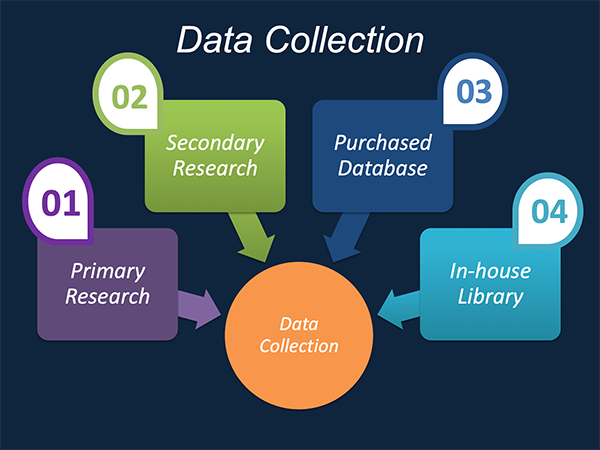
Data Synthesis: This stage includes the evaluation and assessment of all the data acquired from the primary and secondary research. It likewise includes in evaluating the information for any disparity watched while information gathering identified with the market. The data & information is gathered with consideration to the heterogeneity of sources. Scientific and statistical methods are implemented for synthesizing dissimilar information sets and provide the relevant data which is fundamental for formulating strategies. Our organization has broad involvement with information amalgamation where the information goes through different stages:


Market Formulation & Deduction: The last stage includes assigning the data & information in a suitable way in order to derive market size. Analyst reviews and domain based opinions based on holistic approach of market estimation combined with industry investigation additionally features a crucial role in this stage.
This stage includes with the finalization of the market size and numbers that we have gathered from primary and secondary research. With the data & information addition, we ensure that there is no gap in the market information. Market trend analysis is finished by our analysts by utilizing data extrapolation procedures, which give the most ideal figures to the market.
Data Validation: Validation is the most crucial step in the process. Validation & re-validation through scientifically designed technique and process that helps us finalize data-points to be used for final calculations. This stage also involves with the data triangulation process. Data triangulation generally implicates the cross validation and matching the data which has been collected from primary and secondary research methods.





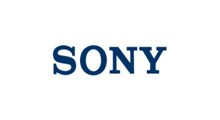

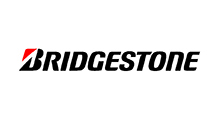

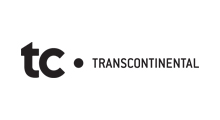















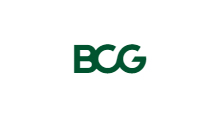


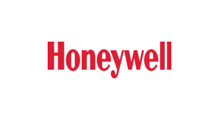

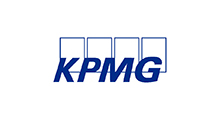
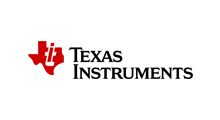



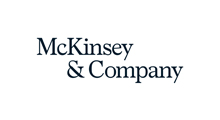

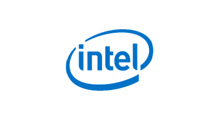







Free Customization
Countries can be added on demand
Free yearly update on purchase of Multi/Corporate User License
Companies served till date

We serve our customers 24x7 for 365 days through calls, emails and live chat options.

Huge database of exceptional market reports bringing market intelligence to your fingertips.

SSL enabled, we offer you various secured payment options for risk free purchase.